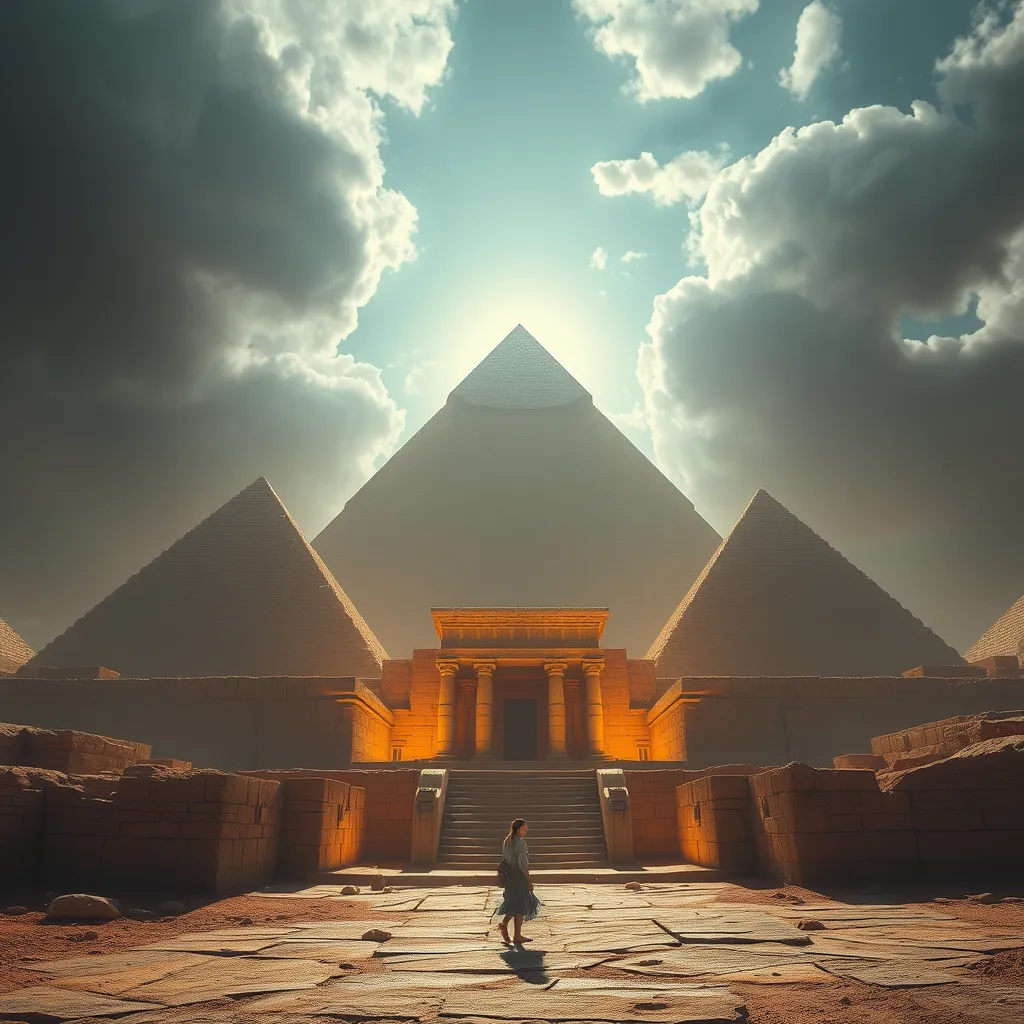The Secret of the Pyramids: Unveiling the Hidden Knowledge of the Ancient Egyptians
I. Introduction
The pyramids of Egypt stand as monumental testaments to the ingenuity and spiritual depth of ancient Egyptian civilization. These colossal structures, primarily built as tombs for pharaohs, represent not only the architectural prowess of their time but also the profound beliefs and cultural practices of the ancient Egyptians. Their construction has sparked intrigue and speculation for centuries, leading to a myriad of theories concerning their purpose and the knowledge possessed by their builders.
This article aims to delve into the hidden knowledge and mysteries surrounding the pyramids, exploring their historical context, architectural marvels, construction theories, and the spiritual significance they held in ancient Egyptian culture.
II. Historical Context of the Pyramids
The construction of the pyramids spans several dynasties in ancient Egypt, with the most notable period being the Old Kingdom, particularly during the Fourth Dynasty (circa 2613–2494 BC).
- Timeline of Pyramid Construction:
- Step Pyramid of Djoser (circa 2670 BC) – The first pyramid structure.
- The Great Pyramid of Giza (circa 2580–2560 BC) – The largest and most famous pyramid.
- Pyramids of Khafre and Menkaure – Built shortly after the Great Pyramid.
Key pharaohs played crucial roles in pyramid construction, with notable figures including:
- Pharaoh Djoser: Initiated the trend of pyramid building with the Step Pyramid.
- Pharaoh Snefru: Perfected the pyramid shape with the Bent Pyramid and the Red Pyramid.
- Pharaoh Khufu: Commissioned the Great Pyramid, a feat of engineering that remains unmatched in scale.
III. Architectural Marvels: The Design of the Pyramids
The pyramids are characterized by their unique structure, which reflects both practicality and symbolic meaning. The design incorporates several innovations and engineering techniques:
- Structural Innovations:
- Use of large limestone and granite blocks, some weighing several tons.
- Advanced logistics for transporting materials from quarries to construction sites.
- Precise alignment with cardinal points, showcasing advanced surveying skills.
- Pyramid Shape Significance:
The pyramid shape itself is believed to symbolize the rays of the sun, reflecting the ancient Egyptians’ belief in the sun god Ra. The sloping sides were thought to help the deceased pharaoh ascend to the heavens, reinforcing the connection between the divine and the earthly realm.
IV. Theories and Speculations: How Were They Built?
For centuries, the methods used to construct the pyramids have been a topic of debate and speculation. Various theories have emerged:
- Ramp Theory: Suggests that large ramps were used to transport stones to higher levels during construction.
- Lever and Counterweight Systems: Proposes that levers, combined with counterweights, facilitated the lifting of heavy blocks.
- Internal Spiral Ramps: A more recent theory that posits the use of internal ramps that spiraled around the pyramid’s core.
Recent archaeological findings, including tools and construction debris, have provided insights into these methods, indicating that a highly organized workforce, skilled in various trades, was essential for the construction of these monumental structures.
V. Symbolism and Spiritual Significance
The pyramids were primarily constructed as tombs for the pharaohs, serving as gateways to the afterlife. They held immense spiritual significance and were intricately connected to ancient Egyptian cosmology and religion.
- Tombs and Afterlife:
The pyramids were designed to ensure the pharaoh’s safe passage to the afterlife, filled with the necessary goods for eternity. The burial chambers contained lavish items, reflecting the wealth and importance of the deceased.
- Cosmology and Religion:
In ancient Egyptian belief, the pyramid was seen as a means to connect with the divine. The alignment of the pyramids with celestial bodies, particularly the stars, underscores their role in the religious practices of the time.
VI. Hidden Knowledge: Astronomical and Mathematical Insights
The pyramids exhibit remarkable astronomical and mathematical precision:
- Celestial Alignment:
The Great Pyramid of Giza is aligned with incredible accuracy to the cardinal points, and its passages are oriented towards the stars, particularly Orion, which was associated with Osiris, the god of the afterlife.
- Mathematical Principles:
The dimensions of the pyramids incorporate the golden ratio, and the ratio of the height to the base perimeter is remarkably consistent across various pyramids, showcasing an advanced understanding of mathematics.
VII. The Legacy of the Pyramids in Modern Times
The pyramids continue to influence architecture and culture around the world. Their design principles and monumental scale have inspired countless structures throughout history.
- Architectural Influence:
Modern architects often draw inspiration from the pyramids, using similar geometric shapes and principles in contemporary designs.
- Ongoing Fascination:
The pyramids remain a subject of research, attracting historians, archaeologists, and tourists alike. The mysteries surrounding their construction and purpose continue to inspire exploration and inquiry.
VIII. Conclusion
The pyramids of Egypt are not merely ancient tombs; they encapsulate a wealth of hidden knowledge that reflects the sophistication of ancient Egyptian civilization. From their architectural innovations and spiritual significance to their astronomical alignments and mathematical principles, the pyramids offer a glimpse into a world rich in culture and understanding.
Preserving and studying these ancient structures is crucial for appreciating our shared heritage and understanding the complexities of human history. The secrets of the pyramids are not just about the past; they remind us of the enduring quest for knowledge and the mysteries that still await discovery.




